#eneolithic
Explore tagged Tumblr posts
Text

Ceramic anthropomorphic sculptures of the East European forest zone by Ekaterina Kashina
#pottery#prehistory#papua new guinea#anthropology#ethnography#ethnoarchaeology#tattoos#ornaments#archaeology#eneolithic#neolithic#my upl
5 notes
·
View notes
Text























Пещера Деветашка считается одной из самых крупных в Болгарии и всей Европе. Она расположена на реке Осым, между селами Деветаки и Дойренци (Ловечская область). Пещера обнаружена лишь в 1921 году, а с 1996 года является охраняемым памятником природы. Ее протяженность составляет около 1,5 км, а входом служит гигантский проем 55 м в ширину и 35 м в высоту.
Пещера Деветашка поражает воображение туристов. Ее потолки высотой от 60 до 100 метров имеют многочисленные провалы, которые местные жители называют окнами. Они создают естественное освещение, но практически не нагревают пещеру. Поэтому здесь прохладно даже в знойные летние дни. Внутри протекает река, есть подземные озера, водопады, сталагмиты и сталактиты. В залах обитают летучие мыши, поэтому они закрыты с 1 ноября по 1 апреля, чтобы не мешать размножению животных.
В пещере обнаружены следы обитания древнего человека. Согласно археологическим исследованиям пещера служила убежищем людям с поздней палеолитической эпохи. Археологические раскопки обнаружили остатки из культурного слоя почти всех доисторических периодов. Рельефный слой толщиной от 0,3 до 5,5 м содержит остатки поселений разных эпох: палеолита(кремневые орудия мустьерских форм, позднепалеолитические изделия из кремня и костей); неолита (очаги с каменной основой, узкие каменные топоры, кремневые заточки и скребки, костяные лощила, шила и долота, керамику с резьбленными надписями); энеолита ( разрушенные жилища, печи, зернотерки,орудия из камня и костей, посуда с резной, рельефной и другой орнаментацией, антропоморфные фигуры); бронзового века (боевые топоры из бронзы, темнолощённые керамические изделия); железного века (бронзовые ножи, железное оружие).
Вторая мировая война оставила и здесь свой след. Во времена социализма пещера использовалась в качестве склада боеприпасов на случай военных действий, а также служила хранилищем нефтепродуктов. В пещере до сих пор остались следы в виде кругов с тех времен.
Немаловажной частью этого чудного места является разнообразие представителей фауны. В пещере обитают более сотни различных видов живности, некоторые из которых даже занесены в Красную книгу! В их числе 12 видов охраняемых земноводных (эскулап, полоз, тритон, древесные лягушки, черепахи Германа), около 80-ти видов птиц, 34 вида млекопитающих и 15 видов летучих мышей.
Devetashka Cave is considered one of the largest in Bulgaria and throughout Europe. It is located on the Osam River, between the villages of Devetaki and Doirentsi (Lovech region). The cave was discovered only in 1921, and since 1996 it has been a protected natural monument. Its length is about 1.5 km, and the entrance is a gigantic opening 55 m wide and 35 m high.
Devetashka Cave amazes tourists. Its ceilings range from 60 to 100 meters high and have numerous gaps, which locals call windows. They create natural light, but practically do not heat the cave. Therefore, it is cool here even on hot summer days. A river flows inside, there are underground lakes, waterfalls, stalagmites and stalactites. The halls are inhabited by bats, so they are closed from November 1 to April 1, so as not to interfere with the breeding of animals.
Traces of ancient human habitation were found in the cave. According to archaeological research, the cave has served as a shelter for people since the late Paleolithic era. Archaeological excavations have discovered remains from the cultural layer of almost all prehistoric periods. The relief layer, 0.3 to 5.5 m thick, contains the remains of settlements from different eras: Paleolithic (flint tools of Mousterian forms, Late Paleolithic objects made of flint and bones); Neolithic (hearths with a stone base, narrow stone axes, flint sharpenings and scrapers, bone polishes, awls and chisels, ceramics with carved inscriptions); Eneolithic (destroyed dwellings, ovens, grain grinders, tools made of stone and bones, dishes with carved, relief and other ornamentation, anthropomorphic figures); Bronze Age (battle axes made of bronze, dark-polished ceramics); Iron Age (bronze knives, iron weapons).
The Second World War left its mark here too. During socialism, the cave was used as an ammunition depot in case of hostilities, and also served as a storage facility for petroleum products. There are still traces in the cave in the form of circles from those times.
An important part of this wonderful place is the diversity of fauna. The cave is home to more than a hundred different species of living creatures, some of which are even listed in the Red Book! These include 12 species of protected amphibians (aesculapius, snake, newt, tree frogs, Hermann's tortoises), about 80 species of birds, 34 species of mammals and 15 species of bats.
Источник:/bulgariaexpert.ru/info/peschera-devetashka.php, /www. ntabulgaria.ru/blog/interesnye-mesta/peshhera-devetashka/, juicyworld.org/devetashka-cave/,/volimo-balkan.livejournal .com /450004.html,//meteo.by/around/c288c52491142c32.html, //www. tripadvisor.ru/Attraction_Review-g14037230-d4184576-Reviews-Devetashka_Cave-Devetaki_Lovech_Province.html,/bolgarskiydom .com/devetashka/.
#Bulgaria#Lovech region#nature#nature aesthetic#mountains#cave#Devetashka#lake#river#trees and forest#ancient history#archeology#landscape photography#travel#wonderful#nature photography#Болгария#Ловечская область#природа#Пейзаж#горы#пещера#Деветашка#лес#небо#река#озеро#туризм#история#археология
263 notes
·
View notes
Text

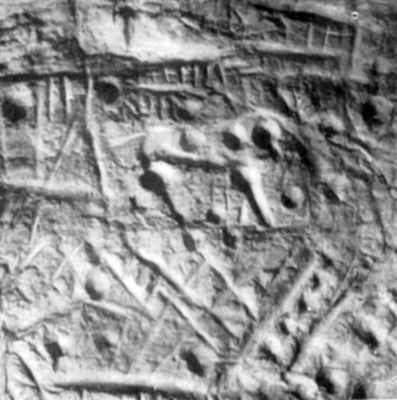

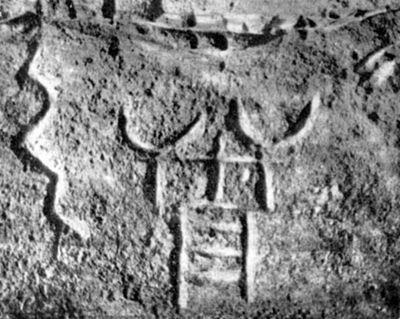

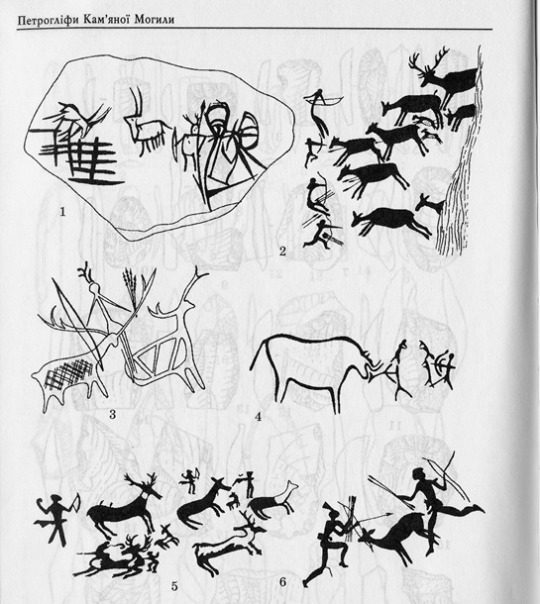
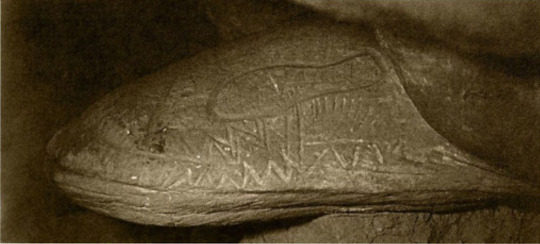
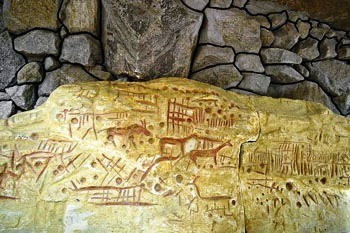


Kamyana Mohyla, or The Stone Tomb, is a unique monument of geology and archaeology of world significance, located in the Zaporizhzhia region near Melitopol.
It is the only place in the world where drawings and petroglyphs dating from such a wide historical range are concentrated in a small area: from the Late Paleolithic era to the Middle Ages (20-16 millennia BC - 11-13 centuries AD). Kamyana Mohyla served as a "world mountain", like Olympus in ancient Greece. It is (as a natural creation, in contrast to much later cult objects created by people - ed.) older than Stonehenge, the Egyptian pyramids and all the ziggurats of the East.
They say the inscriptions are the first examples of human writing: some scientists adhere to the hypothesis that the Melitopol petroglyphs are one and a half to two thousand years older than the world-famous Mesopotamian clay tablets.
Traces of the red paint have been preserved on some drawings. Petroglyphs are made with small stones of hard rocks, which easily left traces on soft sandstone. Several such quartz stones were discovered in the course of research. Goat cave, Bull and Dragon grottoes, a two-meter stone figure of a man-fish... And everywhere there are images of the Tree of Life, a symbol of fertility and eternity.
In the 1950s and 1970s, a debate arose regarding the dating of images to the Palaeolithic, Neolithic, and even Eneolithic. Palaeolithic dating was mainly advocated by V. Danylenko and O. M. Bader (at least at the early stage of research), M. Rudynskyi and other researchers adhered to Neolithic dating. The debate essentially boiled down to whether one of the largest petroglyphs is a mammoth or a bull (a mammoth would point to the Palaeolithic and a bull to the Neolithic). The panelists died in the 1970s and 1980s, remaining true to their opinions, continuing, each in their own way, to call the grotto with the controversial image "The Grotto of the Bull" and "The Grotto of the Mammoth".
People have left their "autographs" here since the Stone Age (22-14 millennium BC). Walls were painted both in the Bronze Age and later. Remains of ancient altars were found here. Through the drawings, you can trace primitive religions — totemism, magic, animism, fetishism, the cult of ancestors... The role of a temple that united three worlds (heavenly, earthly and underground), this steppe monument near Melitopol in the Zaporizhzhia region, has performed for many millennia of various tribes and peoples who passed through.
Since February 2022, Kamyana Mohyla has been under russian occupation. In November 2022, the occupation authorities announced the subordination of the reserve to the federal museum-reserve "Khersones Tavriyskyi." The latter is located on the territory of the occupied Crimean peninsula.
29 notes
·
View notes
Text

USGS map of copper distribution
Chalcolithic - The Copper Age or Eneolithic
Africa (2600 BCE - 1600 AD)
West Asia (6000-3500 BCE)
Europe (5500-2200 BCE)
Central Asia (3700-1700 BCE)
South Asia (4300-1800 BCE)
China (5800-2900 BCE)
Mesoamerica (5000-2900 BCE)
Central Asia
The Bronze age initially included the Copper age. Copper smelting often happened before development of bronze, leading archaeologists to propose it as a separate age in the 1870s. Lead might have been smelted first since it's easy to do so. Copper might have been used in the Fertile Crescent (Timna Valley shows evidence of copper mining as early as 7000 BCE) due to the rarity of lead in the area. Lead and copper seem to have rapidly replaced stone tools as the quality of stone tools rapidly decreased.
Arsenic was added to copper to help make it stronger starting as early as 4200 BCE at Norşuntepe and Değirmentepe. The slag there doesn't contain arsenic, so it was added to the copper deliberately. Tennantite is an alloy of copper with iron, zinc, arsenic, and sulfur which may have led to arsenic being added to copper prior to the discovery and importation of tin.
Europe
First undisputed and direct evidence of copper smelting in Serbia dating about 5000 BCE with the discovery of an axe. Ötzi the Iceman, dated to about 3300 BCE, was found with a Mondsee copper axe.
South Asia
Copper bangles and arrowheads were found in Bhirrana, the first Indus civilization site, fashioned with local ore and dated between 7000 and 3300 BCE. This time period also saw the development of painted pottery.
North America
Smelting or alloying is disputed in North America as copper artifacts appear to be cold-worked rather than smelted, though there are copper artifacts dated as early as 6500 BCE, some of the oldest in the world.

China
Copper manufacturing gradually appeared in the Yangshao Period in China (about 5000-3000 BCE), with only Jiangzhai being the only site where they appeared in the earlier Banpo culture. The Yellow River valley appears to have been a major center of smelting.
Africa
In sub-Sahara Africa, scholars previously were unsure if there was a separate Copper Age, whether the region skipped the Copper and Bronze Ages and went directly to the Iron Age, or if copper and iron were smelted at the same time. Recent discoveries in the Agadez Region of Niger showed that copper metallurgy predated iron by about a thousand years. The two metals continued to be smelted and traded throughout the continent because copper was used as a medium of exchange and status symbol. Theories suggest that copper's redness, shine, and the sound it produced caused it to be valued by Africans for so long.

Housing and Cultural Development
Settlements often featured round houses with pointed roofs, potentially with walls around the houses. This time period was one of transition between the beginnings of the settled and stratified developments and the rise of empires that occurred in the Bronze and Iron Ages. There is evidence of trade in several regions due to the spread of copper and pottery, suggesting that people were mobile, or at least traded, between settlements. This is also the earliest we can trace linguistic movements, such as the spread of Proto Indo-European, which also suggest migration even with sedentary lifestyles becoming more dominant.

2 notes
·
View notes
Text

Medieval fortress "Kale" - Pirot, Serbia


Traces of civilization ever since the eneolithic period have been found here, the latest modifications being adaptations of the walls for the addition of cannons. The remaining buildings are from the upper town and two of the towers (including the donjon) are open for visitors to climb (surprisingly for me, there isn't an entry fee, even though all structures are well-kept). The most interesting part in my opinion was the church:

The original pathways along the walls allow you to walk on its roof and enjoy the view from here - honestly, I thought such thing was considered a sacrilege...😅
The fortress is located in a small park and I am so tempted to try to not sleep in tomorrow, so I'll be able to go and enjoy a book along with the view on one of the nearby benches! 😜
Also, behold my new favourite apartment building:

#travel photography#amateur pics#serbia#my pics#travel 2024#<- I'll have to think of a good tag system if I want to keep something like a travel diary
6 notes
·
View notes
Text
One day in August, Oleksandr Koslov, of the 79th Air Assault Brigade of the Ukrainian armed forces, was digging a trench in the forest near the Siverskyi Donets river in eastern Ukraine.
It was hot and humid. There were mosquitoes everywhere. From the opposite bank of the river “the Russians were shelling constantly”.
He and his four-strong group were taking a break from this backbreaking, dangerous work when one of them mentioned that he had seen fragments of ceramics in the soil. Koslov took a look; maybe they were modern potsherds washed up by river flooding, he thought.
But then more objects began turning up. Flint tools. Animal bones. Ceramics. A neatly made arrowhead.
The 32-year-old history graduate, who worked as a retail manager before volunteering for the Ukrainian military, realised they’d struck something really old – bronze age, maybe even Neolithic. Pausing to study what they had stumbled over wasn’t really an option, though.
“Under the conditions,” he said with some understatement, “you need to dig the trenches as fast as possible.”
Nevertheless, the group gathered up what artefacts they could. Later, Koslov made an improvised “museum” from an ammunition box, labelling the objects to show his senior officers. He also called Dr Serhii Telizhenko at Ukraine’s Institute of Archaeology.
According to Telizhenko’s assessment, Koslov and his fellow soldiers had stumbled on an ancient burial site dating back perhaps 5,000 years to the stone age, but also encompassing material from the Eneolithic or copper age, and the “catacomb culture” of the middle bronze age that flourished in the steppe in the third to second century BCE.
Ukraine is a country spectacularly rich in ancient archaeology, whether of the Scythians, with their horses and finely worked gold, who ranged across the steppes from the ninth to second centuries BC, or of the intriguing stone age Cucuteni-Trypillia culture, which produced remarkable, elaborately decorated ceramics and huge, city-scale “megasites”, or of the Greeks, who established trading emporiums on the Black Sea coast.
But in a country with already limited resources for cultural protection, Russia’s full-scale invasion has meant an onslaught of destruction to this rich record of the past.
The full extent of the damage is impossible accurately to assess. Research published this month in the journal Antiquity points to the difficulty of on-the-ground assessment even in liberated areas such as Chernihiv oblast in the north and Kharkiv in the east because of the danger of landmines and unexploded munitions.
Meanwhile, museum collections from occupied cities such as Melitopol, Kherson and Mariupol have been lifted and taken wholesale to Russia and Crimea. Cultural heritage of all kinds, including churches and other monuments, has been targeted, with destruction “at a rate not seen since 1945”, according to the authors. Trench-digging is “destroying buried cultural heritage at an alarming rate”, they add. The authors regard archaeological sites with particular concern, as “more problematic and less understood” than other forms of cultural heritage.
1 note
·
View note
Text
Megalithic Constructions

In the final phase of the Neolithic and the subsequent Eneolithic period, a remarkable development of megalithic constructions emerged, a term derived from the Greek ("mégas" for large and "lithòs" for stone). These imposing structures, largely dedicated to worship and collective burials, bear witness to the ingenuity and spirituality of ancient civilizations.
Menhir: Towering Monuments of Symbolic Meaning
Menhirs, derived from Breton ("men" for stone and "hir" for long), are tall monoliths driven into the ground, often marking burial sites. Their height, ranging from 2-3 meters to 6 meters, can reach extraordinary peaks, as highlighted by the Breton menhirs of Kerloas and Locmariaquer. These monoliths can be isolated or arranged in straight or circular alignments, often oriented in precise astronomical directions. In Carnac, Brittany, a complex of about 3000 menhirs extends in parallel rows, oriented westward, creating a captivating panorama over a kilometer long.
Dolmen: Innovative Trilithic System in Funerary Architecture
The dolmen, derived from Breton ("doul" or "tol" for table and "men" for stone), constitutes a form of funerary architecture. Composed of two or more stone blocks driven into the ground, surmounted by a horizontal slab, this trilithic construction system represents mankind's first use in this regard. The dolmen, primarily sepulchral, can be an individual or collective tomb, often characterized by an access corridor. Initially covered by stone or earth tumuli, the oldest dolmens in Italy are found in Sardinia, Apulia, and the Alpine region for the Copper Age.
Cromlech: Concentric Monuments of Astronomical Significance
Cromlechs, derived from Breton ("crom" for round and "lech" for stone), represent the monumental application of the trilithic system. These consist of series of dolmens arranged in concentric circular figures. Widespread in Neolithic and Eneolithic Europe, cromlechs originally served to define the lunar cycle, later adapting to indicate the movement of the Sun and the progression of seasons. In addition to their practical utility, these sites were spaces for collective ceremonies, including funeral, agricultural, and fertility rites.
Allée Couverte: Collective Funerary Constructions in France
Another application of the dolmen, particularly common in France, is the Allée couverte ("covered alley"). These collective funerary constructions are composed of stone slabs supported by vertical structures or dry-stone walls, sometimes reaching considerable dimensions. A notable example is the Allée couverte du Mougau, erected between the end of the Neolithic and the beginning of the Eneolithic, which stands out for the presence of engravings. The structure, 14 meters long, has a north-south orientation, with a northern entrance and a chamber at the southern end, likely preceded by a vestibule.
In Conclusion
Megalithic constructions bear witness to the rich cultural and religious landscape of ancient civilizations, offering a detailed look into how these communities conceived the world and the divine.
#MegalithicWonders#AncientArchitecture#SpiritualHeritage#NeolithicCultures#HistoricalMonuments#ArchaeologicalMarvels#CulturalSignificance#AncientCivilizations#CeremonialSites#HistoricalSpirituality#StoneAgeWonders#EneolithicHeritage#CulturalExploration#NeolithicArtifacts#ArchitecturalInnovation#CulturalHeritage#AncientWisdom#HistoricalDiscovery#SacredSites#AncientBeliefs
0 notes
Photo

Merheleva Ridge
The Merheleva Ridge is a location in Ukraine known for its historical significance. This ridge is home to an Eneolithic temple and burial complex.
Read more at: https://paganplaces.com/places/merheleva-ridge/
0 notes
Photo

Rituals could include rituals with masks and various vessels. A woman (eventually a man) who had been performing a ritual ceremony was another being. Ritual practices apparently related to the role of shamans (...) illustrate totally unique findings of masks in the late Neolithic (and Eneolithic). The unmistakable mask had the female statuette „Vidovdanka” from the settlement Vinča - Belo Brdo (Serbia). On the face are to see mainly eyes and nose. The mask is clearly visible from the profile.

There is also a head of the figure with a mask or another head of a statuette with a mask. There is a hole on each side. These holes were used apparently to fasten.

Very famous is the female statue again Vinča culture from the settlement Liubcova on the left bank of the Danube (Banat, Judeţul Caraş-Severin, Romania).


The statuette holds a mask in the left hand and a jug in the right hand. The head of this statuette is broken.
The half of the ceramic mask of the Vinča culture in the size of face comes from a tell-settlement enclosed with two ditches in Uivar in western Romania.

“A probe into the spiritual life of prehistoric people,a reflection of shamanism in archaeology” by Jaromír Kovárník
#masks#ritual#neolithic#archaeology#prehistory#prehistoric europe#vinca culture#female figurine#artefact#shamanism#my upl#Jaromír Kovárník
28 notes
·
View notes
Text
After shallowing of Dnipro River, new archaeological artifacts discovered in Khortytsia
Employees of the Khortytsia National Reserve, after the Dnipro River became shallow due to Russians undermining the Kakhovka HPP, discovered new archaeological sites, including samples of ceramics from the Eneolithic era (6,000-5,000 BC). This was reported by the Ministry of Culture and Information Policy in Telegram.
“Employees of the Khortytsia National Reserve conduct daily inspections to ensure the preservation of these monuments and find archaeological material. During this period, several hundred archaeologic
Source
0 notes
Quote
The Khvalynsk culture expanded to the south and west along the Lower Danube into the north Caucasian region from ca. 4800 BC, with the Nalchik cemetery in the northern Caucasus steppe being synchronous with this early stage (Vybornov et al. 2018). At the same time, Khvalynsk expanded to the west into the Don–Kalmius interfluve, developing a significant area in the north Pontic region with the so-called Novodanilovka group, including synchronous findings reaching the lower Danube region and beyond with the so-called Suvorovo group (Kotova 2008)... It was probably the arrival of Suvorovo migrants that triggered the idea of lavish grave furniture and the display of wealth, prestige, power, and social position in the graves of Copper Age sedentary farming communities of south-eastern Europe. The Varna I cemetery is the clearest representative of the expansion of the new mentality to the Balkans, and has been recently dated more exactly to ca. 4590–4340 BC (Krauß et al. 2017)... While the richness displayed by the Varna cemetery and its accumulation of wealth are unique in south-eastern Europe, similar accumulations of material wealth are encountered in isolated finds all over the Balkans and the Carpathian Basin, reaching Greece and Anatolia. Metallurgy requires material and skills which are not readily available, which means that elites kept control of them by limiting people’s ability to access and produce metals themselves. In fact, except for the distinct material culture, the rich Varna burials and the Novodanilovka burials are essentially equivalent (Heyd and Walker 2004). Graves and hoards demonstrate thus sharp inequality over wide parts of south-east Europe in the 5th and 4th millennium BC, showing thus social stratification, also displayed in the form of house sizes and pottery inventories (in quantity and quality) within settlements. There is thus a pattern of robust social institutions and enhanced complexity, of lineages and powerful chieftains, of networks and bonds persistent in time and space, reflected in Varna, in mega-villages of middle and late Trypillia, and in many other sites in south-eastern Europe (Heyd and Walker 2004)... The two Maikop samples from this period in the Northern Caucasus Piedmont show largely continuity with Caucasus Eneolithic samples, but with a clear additional contribution of Anatolian Neolithic-related (possibly AME) ancestry (ca. 15%) compared to them. Five Maikop outlier samples from the steppe (ca. 3600–3100 BC) represent a likely expansion of Maikop peoples to the area and their admixture with the previous Khvalynsk and local settlers, suggesting their acculturation in the region, evidenced by their admixture closest to ANE. In terms of haplogroups, one sample from Baksanenok (ca. 3350 BC) is reported as within the K-M9 trunk, possibly L-M20. The acculturation of the North Caucasus region may also be inferred from haplogroups of outliers, which show one Q1b2b1b2-L933+ (formed ca. 13600 BC, TMRCA ca. 6600 BC) and another R1a1b-YP1272+, in contrast to previous Eneolithic (J-M304) and later (L-M20) haplogroups (Wang et al. 2019). Both individuals were buried in the same kurgan in Sharakhalsun and with similar radiocarbon dates (ca. 3350-3105 BC), and a later individual attributed to the Yamna culture in the same site (ca. 2780 BC) also shows a typical Indo-Anatolian lineage R1b1a2-V1636. Another outlier shows hg. T1-L206. Horse trade, including wheels, carts, and the possibility of a quicker transport of metals into Uruk, is proof of an indirect contact between steppe herders and Mesopotamia. The need of exported domesticated horses to be accompanied by experienced breeders and riders from the lower Don offers a solid framework to support the hypothesis of the presence of Late-Indo-European-speaking peoples in Mesopotamia, and thus allow for Indo-European borrowings in Sumerian (Sahala 2009-2013). Nevertheless, the scarcity of proofs for wooden vehicles in the region before the first attested one in Sharakhalsun, as well as bioarchaeological investigations of common representations which point to an emphasis on cattle as driving force—instead of highlighting the means of transportation, as in the Yamna culture—seriously challenge the hypothesis of large-scale mobility in the piedmont and the Caucasus (Reinhold et al. 2017). The condition of Pre-North-West Indo-European (likely spoken by the late Repin culture expanding westward) as an Euphratic superstratum of Sumerian (Whittaker 2008, 2012) would require a more detailed explanation of internal and external cultural influence, and reasons for potential language replacement and expansion in Mesopotamia.
Carlos Quiles, A Game of Clans
1 note
·
View note
Text
The territory from Azerbaijan to Punjab anthropologically represents the area of the Indo-Afghan branch of the Caucasians, one of the earliest carriers of an Indo-European speech. In the southeast, Indus Valley is included in the original area. In the northwest, Eastern Transcaucasia (in particular, the valleys of the Kura and Araks river) are included in the range of Indo-Afghans.
“The Chalcolithic inhabitants of Mehrgarh in Baluchistan from at least 4500BCE were anthropologically related to the inhabitants of Harappa of the bronze age – typical Indo-Afghans.
Indo-Afghans have lived at the junction of Iran and Hindustan since at least the Neolithic era, as evidenced by the paleoanthropological study of the skeletons of the neolithic settlement Sang-e-Chakhmaq in northeastern Iran.
Sang-e-Chakhmaq in northeastern Iran in both sexes, the average cranial index of all individuals falls on dolichocrania, but close to hyperdolichocrania of people of the Mediterranean type identified in the skulls of the periods Sialk from I to IV and Hissar III, although the faces from Sang-e-Chakhmaq were not so narrow.
Djeitun culture people were also already of the Indo-Afghan anthropological type. In the south of central Asia, the valley of the Zeravshan river served as the northern boundary of the Indo-Afghans' area in the Eneolithic and Bronze Ages.
North-Indian variant of the Indo-Afghan type includes large ethno-caste groups of the population of northern India – Jats, Rajputs, Brahmins, Gujars, Ahirs, etc.
Dolichocranic Caucasoid (Mediterranean) type is characteristic of the regions to the south and west of the Amu Darya, where it has been predominant since the bronze age (for example, Djeitun derived Anau and Namazga Tepe in Turkmenistan) to the present (Turkmenistan, Iran, Northern India and the southern slopes of the Hindu Kush).
The population of the south of the Pamir in the 1stMillenniumBCE – 1stmillenniumAD also had a pronounced dolichocranic caucasoid type. The same type was characteristic there for the population of the Saka culture and for later times, at least until the middle of the 1stmillenniumBCE. In the bronze age, the dolichocranic caucasoid type was widespread north of the Amu Darya, in Bactria and Sogdiana and Ferghana.
Anthropology records the presence of the Mediterranean or South Central Asian type in the Volga Valley as early as the pre-Khvalynsk time and its transition from the Khvalynsk epoch to the early Yamnaya epoch.
In the Khvalynsk II burial ground in the “central” burials of elites with various inventory mostly people close to the Mediterranean type are buried.”
1 note
·
View note
Photo


I have been working with the epic heavy metal artist Christian Sloan Hall again, this time to produce some artwork of Western Steppe Herders for my upcoming video on the Yamnaya people. It is hard to reconstruct eneolithic people of the steppe due to lack of evidence for much of their material culture, but we did our best and drew on many sources to try and get it right. Now I shall explain why he depicted them this way.
Because we couldn’t find any Yamnaya clothing, we referred to images of clothing from other eneolithic steppe cultures, namely the Mariupol culture and the Azov-Dnieper culture from the Mamaj Gora cemetery and also referred to female clothing of the later Bronze age Andronovo culture. The burial caps are common to all, and since Yamnaya fall in between those two, it is probably safe to say such hats were worn by their men and women too. We can see from Yamnaya stelae that the men wore pointed beards and sometimes went about naked or semi-naked and also that they wore sandals but Christian depicted this man wearing shoes like those of the Azov-Dnieper culture. Trousers do not appear in the archaeological record until around 2000 BC, but leg wraps are found around Neolithic Europe and Christian has given him these as they would be useful in the colder months when riding a horse.
They are both wearing braids because linguistic evidence reveals there was a PIE word for hair braids. The man has silver hair coils on his braids as these are attested in many Yamnaya burials as are dog /wolf teeth necklaces.
There is evidence for tattooing in the Yamnaya offshoot Catacomb Culture. We can see the tattoos on finger bones where the lack of flesh between skin and bone resulted in stained bones. We should presume that these tattoos covered other parts of their body too but we cannot tell for sure where, however we have Iron Age Scythian tattoos as a reference tool.
Iron Age Scythians also used deer antlers as cheek pieces for their horses, and the pre-Yamnaya Sredny Stog culture also had what appear to be antler cheek pieces so Christian has depicted the Yamnaya horses with similar tack wear.
The weapons and pottery depicted are directly attested in Yamnaya archaeology.
#Yamnaya#scythian#eneolithic#chalcolithic#bronze age#steppe#andronovo#sredny stog#proto-indo-european#indo-european#ukraine#russia#catacomb culture#archaeology#christian sloan hall#survive the jive
238 notes
·
View notes
Photo

⚱ . . . #thehub_vsco #sardinia #cerdeña #sardegna #tumblrgirl #betterlife #sardiniangirl #photographylover #photography #sardinianarchaeology #bepopular #genginsapgan #archaeologyofsardinia #ig_bestever #igaddicts #imagin8 #archeology #archeologylover #eneolithic #sardegna_reporter #archaeophoto #archaeology #Carbonia #sulcis #simuc #archaeologist #archaeologylover (presso Musei di Carbonia - SIMUC) https://www.instagram.com/p/B4mzjhZIaGv/?igshid=1pe2bjhnq9ukn
#thehub_vsco#sardinia#cerdeña#sardegna#tumblrgirl#betterlife#sardiniangirl#photographylover#photography#sardinianarchaeology#bepopular#genginsapgan#archaeologyofsardinia#ig_bestever#igaddicts#imagin8#archeology#archeologylover#eneolithic#sardegna_reporter#archaeophoto#archaeology#carbonia#sulcis#simuc#archaeologist#archaeologylover
0 notes
Link
People being nasty pieces of work since ages ago. A sad site.

#ancient Croatia#indiscriminate killing#mass murder#Potocani#mass grave#archaeology#Copper Age#Middle Eneolithic
2 notes
·
View notes
Text
TAG GAME!!!!
thank you @burst-of-iridescent!!! (ana, light of my life)
rules are, tag ten people you want to know better: @vesperass-anuna @klauscarolove @fairyninja73 @presumptious-quirks @everylokitten @heavensenthearty @kyleonwheels @nightquills @juldooz-atla @the-peregrine and anyone else who feels like joining <3
relationship status: sweeties, besties. when i start dating anyone you'll know i've been snatched and replaced by a pod person
favourite food: see, every time anyone asks me this, i just throw out a random food i like because i can never settle on one thing. this time, let's go for this salad my dad makes, with chicken, pasta, cherry tomatoes, red pepper and oregano
song stuck in my head: something lovely by celtic woman that i don't remember the title of, tragic for me 😬
last thing i googled: bi-weekly meaning (turns out it can mean both twice a week and every two weeks even though i've never really heard the latter used)
time: 21:15
dream trip: honestly at this point, i just wanna get my exams done with so my dream trip is to get HOME. dalmatians can only spend so much time away from the sea before something inside us cracks
something i want: to magically pass all my exams (eneolithic included) without having to work for it?
35 notes
·
View notes